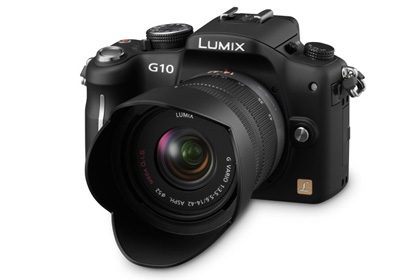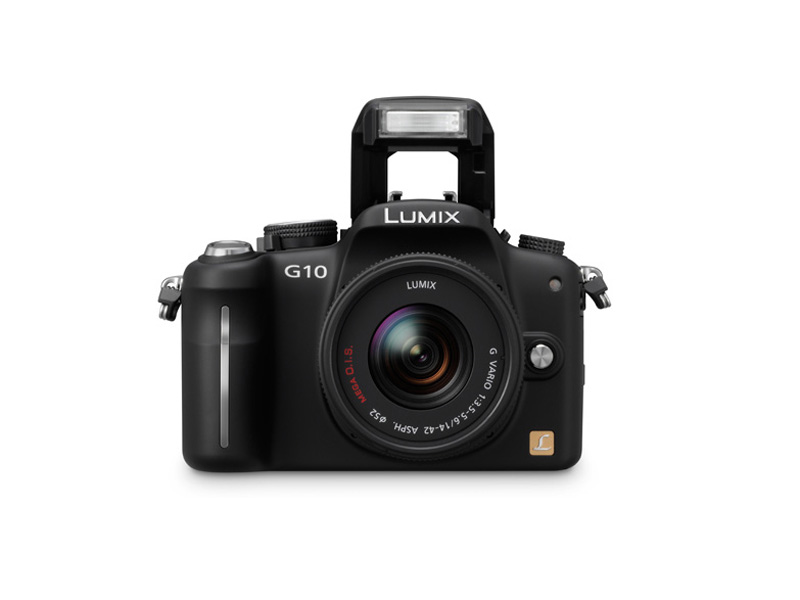Why you can trust TechRadar

Despite the simplification of the design, the Panasonic G10 is still a remarkably well designed camera. For its small shell, the controls are well thought out and spaced.
Like on the G2, you get a large dial to access its key shooting modes, and a pair of levers – one to turn the camera on, and the other to cycle though the different drive modes (including a top continuous shooting speed of 3.2 frames per second).
On the left side of the protruding electronic viewfinder you get a single button for accessing the main focus modes (although the option to quickly toggle through the AF point options provided on the G2 is missing).
Given its size and weight, the G10 feels remarkably substantial in the hand – with a well-shaped grip allowing you to get good purchase on it as you shoot. A rear input dial allows you to toggle through and input menu and button options. As with the G2, this control works very well in aperture priority (or shutter priority mode); turn to change the aperture (or speed) and push and turn to change the exposure compensation.
Sadly it is the differences in handling between the G2 and G10 rather than the similarities that you really notice. Electronic viewfinders are generally a godsend in low light – showing the scene more clearly than a DSLR's viewfinder.
In bright light, however, they are not quite as clear and bright as using a DSLR. However, in both situations the G10 is at a severe disadvantage, as with far fewer pixels it cannot show the scene in anywhere near as much detail as the G2.
Current page: Panasonic G10 Review: Build Quality and Handling
Prev Page Panasonic G10 Review: Overview Next Page Panasonic G10 Review: Controls and Features